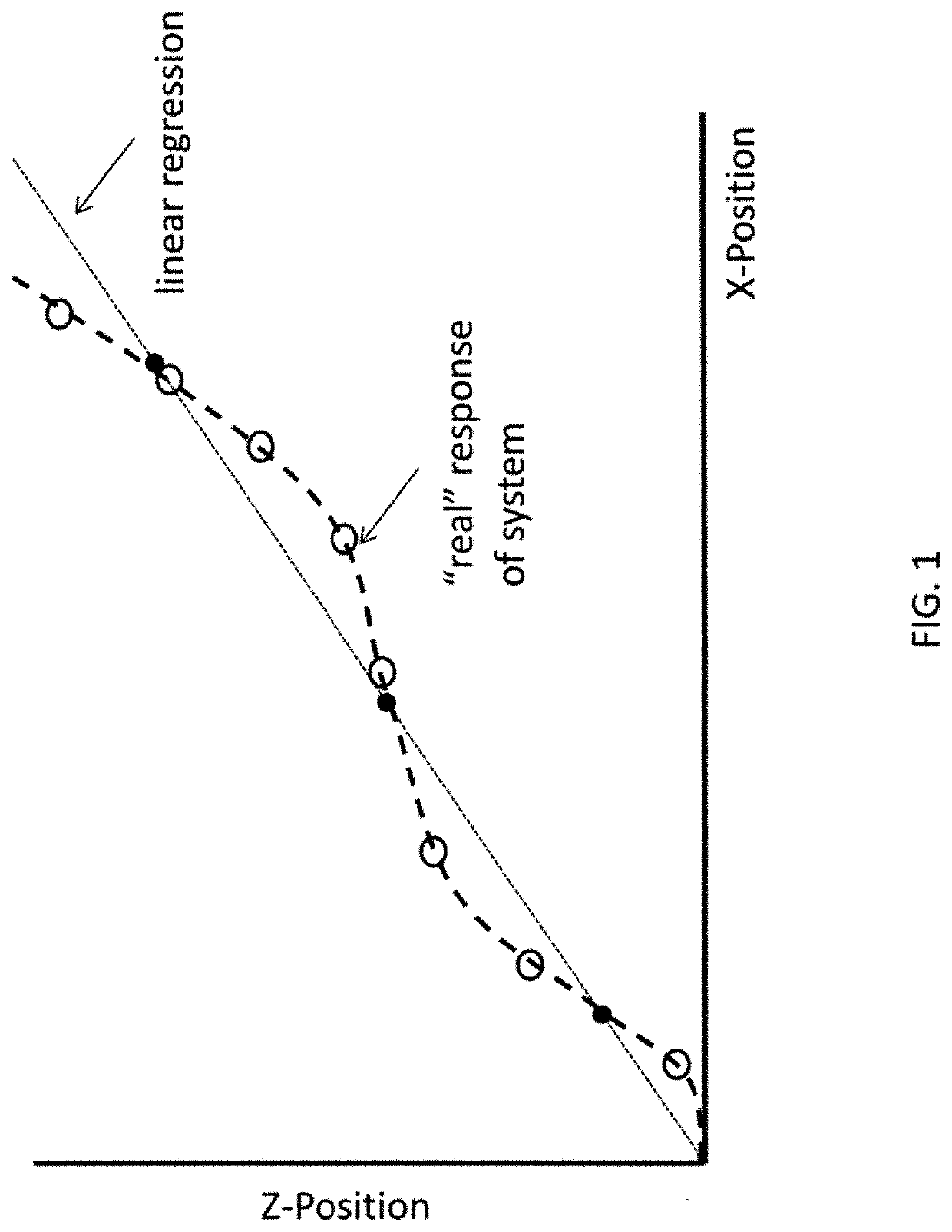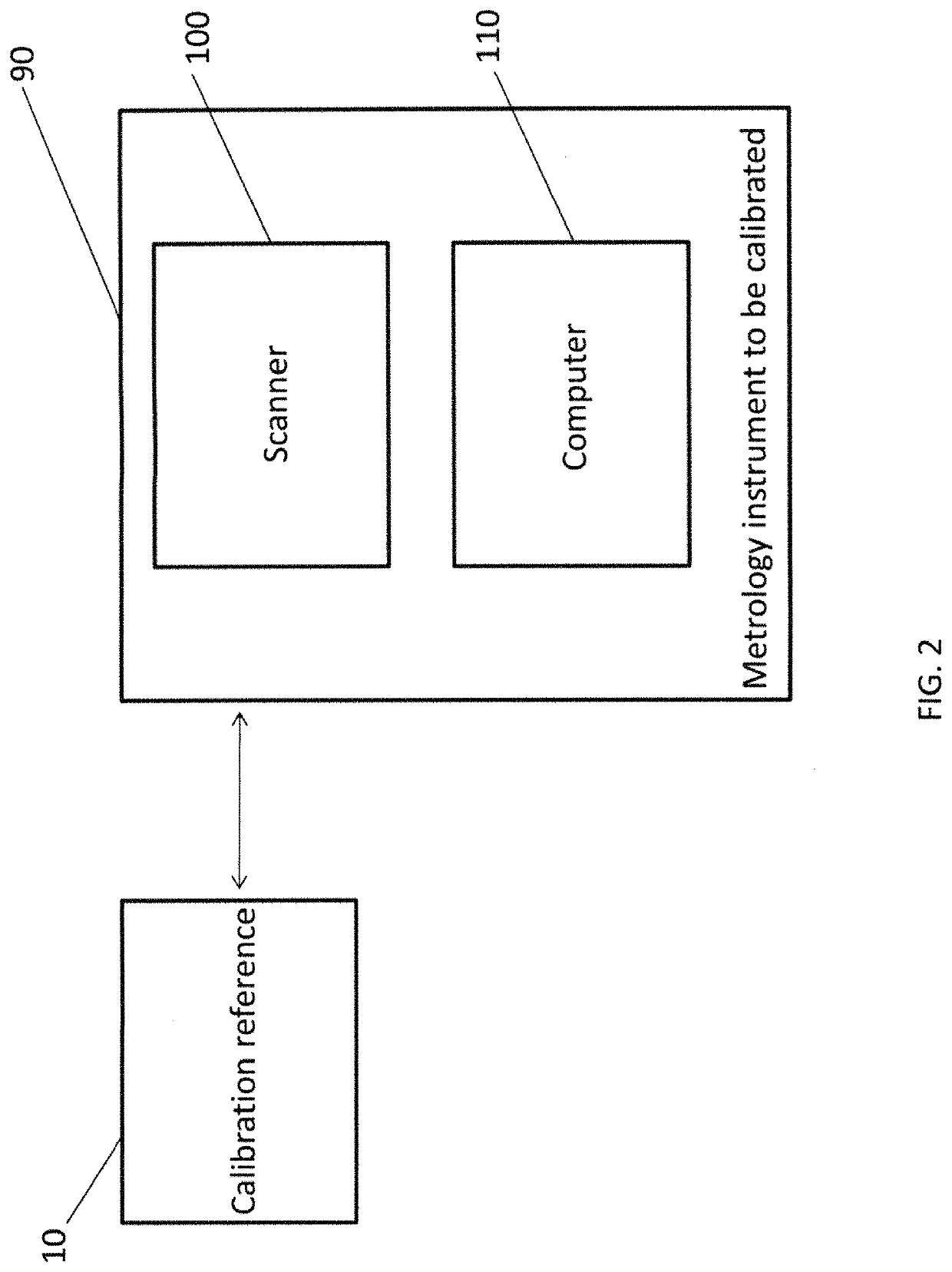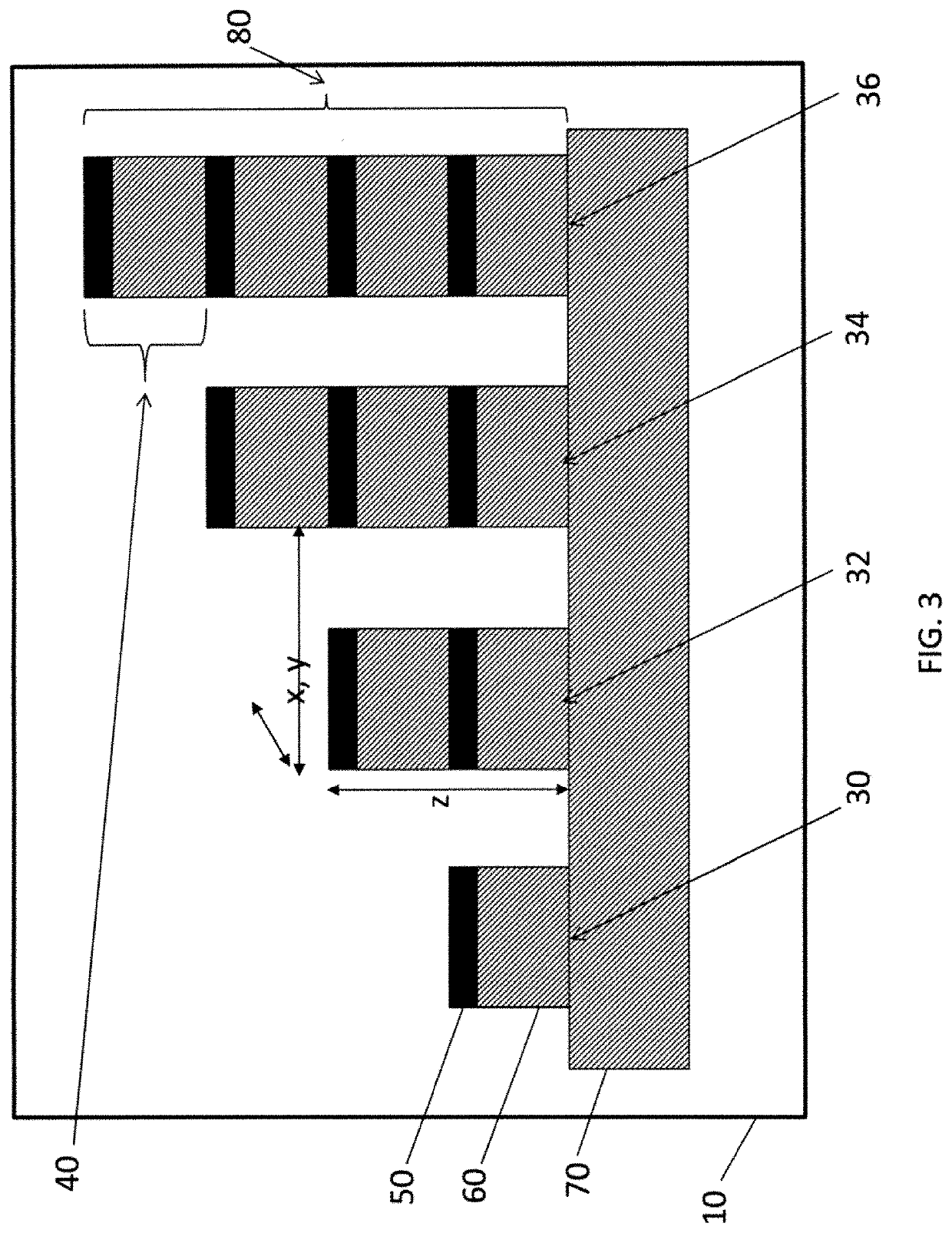Method of calibrating a nanometrology instrument
a nanometrology and instrument technology, applied in the direction of instruments, scanning probe techniques, etc., can solve the problems of increasing the size, weight and assembly costs of optical systems, adding costs, and challenging fabrication
- Summary
- Abstract
- Description
- Claims
- Application Information
AI Technical Summary
Problems solved by technology
Method used
Image
Examples
Embodiment Construction
[0022]Referring by way of illustration to FIG. 1, Applicants recognized the difficulty of calibrating a nanometrology instrument. In FIG. 1, the X-position axis represents a horizontal dimension, and the Z-position axis represents a vertical or height dimension. The dotted line in FIG. 1 represents a theoretical system response from a nanometrology instrument. The theoretical system response is a linear regression line. The dashed line in FIG. 1 represents a more representative “real” response of the nanometrology instrument. Comparing the theoretical system response with the real response of the nanometrology instrument, Applicants recognized that the real response was not a linear regression. Applicants realized that if the nanometrology instrument were to be calibrated based on a few measured heights, e.g., as represented by black dots, the user calibrating the nanometrology instrument would assume a perfect, linear fit. However, as can be seen in FIG. 1, the real response includ...
PUM
 Login to View More
Login to View More Abstract
Description
Claims
Application Information
 Login to View More
Login to View More - R&D Engineer
- R&D Manager
- IP Professional
- Industry Leading Data Capabilities
- Powerful AI technology
- Patent DNA Extraction
Browse by: Latest US Patents, China's latest patents, Technical Efficacy Thesaurus, Application Domain, Technology Topic, Popular Technical Reports.
© 2024 PatSnap. All rights reserved.Legal|Privacy policy|Modern Slavery Act Transparency Statement|Sitemap|About US| Contact US: help@patsnap.com










